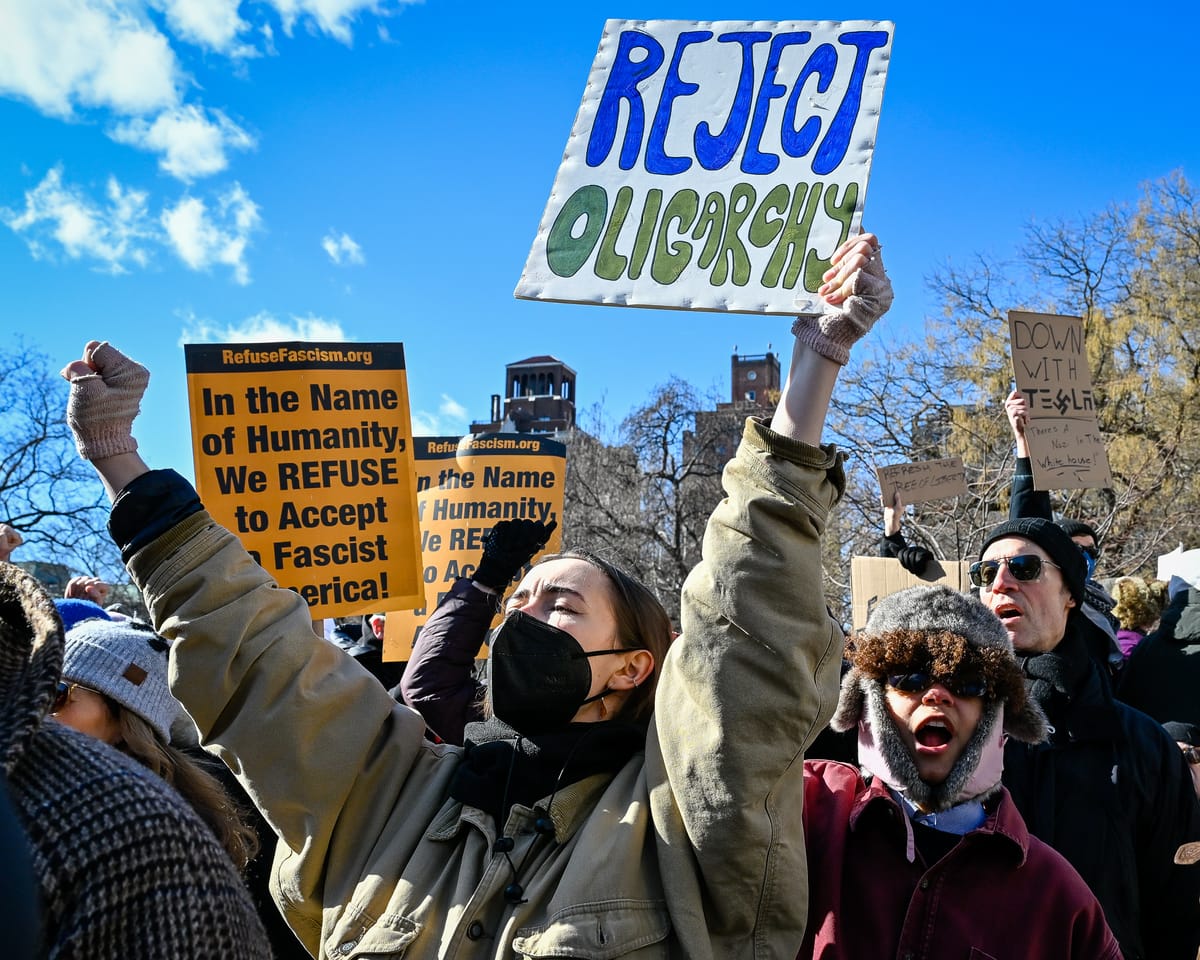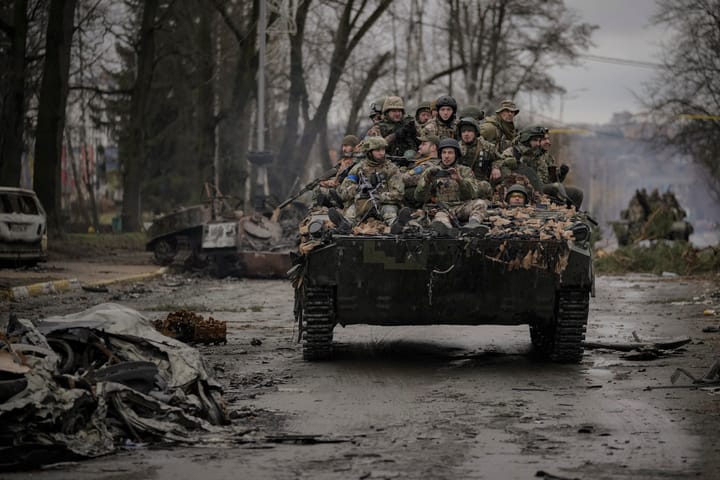On the coldest Presidents Day in memory, Americans took to the streets—not to overthrow a king, but to stop the rise of a dictator.
They came in Revolutionary War garb, they came in masks, they came wrapped in winter coats, bearing warnings against plutocracy and wearing determination on their frozen faces. On Presidents Day 2025, thousands of Americans chose to forgo their warm homes to stand in sub-freezing temperatures across the Nation. In Boston, nearly a thousand protesters trudged through the snow from the Statehouse to City Hall, their breath visible in the frigid air as they chanted, "No kings on Presidents Day." In Washington D.C., Orlando, Seattle, and across the United States, demonstrators braved the cold to protest the acceleration of authoritarianism under the Trump regime.
The timing was pointed, the symbolism unmistakable. On a day meant to celebrate the democratic institutions that have guided America for over two centuries, citizens facing all the signs of an American dictatorship took to the streets to defend those very institutions.
When parents brought their children to the protests, they weren't just teaching them about civic duty. They were showing them what democracy looks like in action - messy, cold, determined, and very much alive.
Democracy has always had its temperature taken in the streets. The American experiment began there, with colonists dumping tea into Boston Harbor and farmers standing at Lexington and Concord. Civil rights were won there, between police dogs and fire hoses. The Vietnam War ended there, amid tear gas and flower crowns. And now, in 2025, Americans are back in the streets, checking democracy's vital signs once again.
Protesters didn't just target Trump - they specifically called out Musk's role in the new Department of Government Efficiency. "Deport Musk Dethrone Trump," read one sign in D.C., capturing the movement's dual focus on presidential power and billionaire influence.
Some will say these protests don't matter. They'll point to the relatively modest numbers - thousands across multiple cities rather than millions. They'll note that previous anti-Trump protests haven't stopped his agenda. They'll argue that standing in the cold changes nothing.
But that misses the point. These protesters turned up on the coldest day in recent memory to make their stand. They dressed as Revolutionary War soldiers not because they were LARPing history but because they understood its weight. They brought their children not because it was comfortable but because it was important.
What do you call it when citizens brave sub-zero temperatures to defend democratic institutions? When they quote the founders while protesting modern plutocrats? When they turn a holiday celebrating presidential power into a referendum on its limits?
I call it democracy with a fever. And like any fever, it's a sign that the body politic is fighting an infection.
The "50501 Movement" organizing these protests seems to understand the historical moment. They're following a playbook as old as the republic by focusing on state capitals and major cities. When protesters march from the Massachusetts Statehouse to Boston City Hall, they're walking in the footsteps of Sam Adams and his Sons of Liberty.
But there's a key difference between these modern protesters and their Revolutionary War-era counterparts. Today's demonstrators aren't calling for the overthrow of a distant monarch. They're fighting to preserve the democratic guardrails designed to prevent any president from becoming one. Their signs don't demand independence from Britain - they demand independence from billionaires. "This is a Coup," read one placard, while another showed Uncle Sam declaring, "I Want You to Resist."
The temperature in Boston was below freezing. The wind chill dropped into the teens. Similar conditions plagued protesters nationwide as the polar vortex tightened its grip. But they stayed. They marched. They chanted. Because democracy isn't measured in degrees Fahrenheit - it's measured in degrees of commitment.
Will these protests change anything? That's the wrong question. The right question is: what would it mean if people stopped protesting? What would it say about American democracy if citizens stopped showing up to defend it? When the temperature drops below freezing and people still choose to stand up for democratic institutions, that's not just resistance - it's resilience.
The Revolutionary War reenactors who showed up in Boston understood something fundamental about American democracy. It's not just about the mechanisms of government - the checks and balances, the separation of powers, and the peaceful transfer of authority. It's about the willingness of citizens to defend those mechanisms, even when it's uncomfortable, even when it's cold, even when it seems futile.
Democracy doesn't happen in voting booths every few years. It happens in the streets, the cold, and the face of power. On Presidents Day 2025, as the polar vortex gripped the Nation, thousands took democracy's temperature. They found it running hot.
That fever might be uncomfortable, but it's fighting something worse than winter - the chill of fascism in America.



